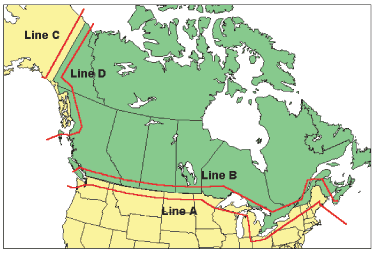Thank you for your interest in our SiteSync IQ Wireless Clock System. Our SiteSync IQ Wireless Clock System is guaranteed to wirelessly synchronize time and control any device with a signal circuit.
Please consider Federal Communications Commission (FCC) licensing requirements before ordering the SiteSync IQ Wireless Clock System. In the United States, this system operates on FCC-licensed frequencies in the 450-470 MHz range.
Option 1: Use shared Nationwide FCC License.
WQFW336, operating at 464.600, 464.625, 464.650, 464.675, or 464.700 MHz and controlled by American Time. |
Option 2: Obtain your own FCC License.
American Time will assist you with the process of obtaining this license. |
| Pros: |
Pros: |
- No additional costs for obtaining or renewing a license.
- No delay of your equipment while waiting for a frequency to be assigned. This license allows immediate use nationwide. American Time will add your site coordinates to the WQFW336 license after you have finalized the transmitter power and antenna placement.
- No FCC paperwork and renewals.
|
- 5 watt limitation near Canada is removed.
- The Frequency Coordinator will pick a one-way paging frequency most suitable to your location to ensure no interference. See Note 2 below.
- Antenna height limitations are removed.
|
| Cons: |
Cons: |
- License is not under your control.
- You must agree to contact American Time before relocating, selling, discontinuing use of, repairing or modifying the transmitting equipment or antenna.
- You must agree to provide AT the contact information of the person at your site who is responsible for the use and maintenance of this equipment. AT will contact this person periodically (typically one or two times annually) to verify the equipment is still in operation at your site and in proper operating condition.
- Limitations on power output (5 watts near Canada). See Note 1 below.
- Limitations on antenna height (maximum 125 feet above ground).
|
- Legal Responsibility: As the holder of the license, you are solely responsible to the FCC for complying with its regulations governing the use of the transmitting equipment
- The cost of licensing, which covers any frequency coordination fees, FCC application and regulatory fees for processing the paperwork.
- Delays while waiting for license to be granted by the FCC. Frequency coordination can take more than six weeks in areas nearest highly-populated Canadian border cities. Installation north of Line A or east of Line C requires frequency coordination with Canada.
- You are responsible to renew the FCC license every 10 years. The FCC license renewal fee varies depending on the type of entity.
|
| |
|
| NOTE 1: If your location is north of Line A or east of Line C and your transmitter power is more than 5 watts, you will need to obtain an FCC License for your site. These lines define a border region with Canada, where frequency coordination with Canada is required. See the FCC Map showing these lines. |
NOTE 2: The FCC defines frequency coordination as “The process of obtaining a frequency that will most effectively meet the applicant’s needs while minimizing interference to licensees already operating in the band.” |
|
|

To view the FCC License held by American Time, click here and enter the Call Sign WQFW336 in the License Search box.


